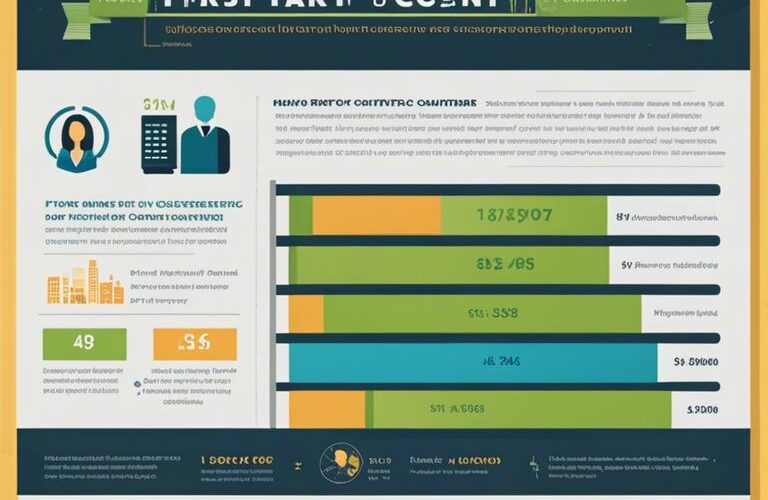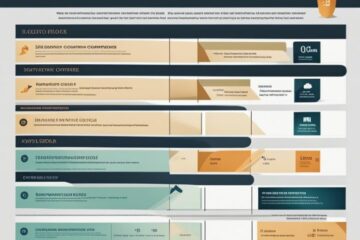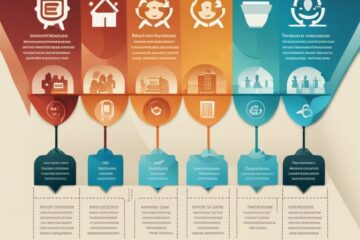This guide aims to provide a comprehensive understanding of First Contact Resolution (FCR) and its significance in customer service. FCR is a crucial metric that measures the effectiveness of resolving customer issues on the first point of contact. Achieving a high FCR rate is indicative of efficient and satisfactory customer service, leading to increased customer satisfaction and loyalty.
Understanding the concept of FCR is necessary for businesses looking to enhance their customer service operations. By addressing and resolving customer queries, concerns, and issues promptly and effectively on the initial interaction, companies can reduce operational costs, enhance productivity, and ultimately build a positive brand reputation. Failing to prioritize FCR can result in customer dissatisfaction, decreased loyalty, and increased operational inefficiencies.
Throughout this guide, we will examine into the benefits of FCR, strategies to improve FCR rates, and the impact of FCR on overall customer experience. By mastering the art of First Contact Resolution (FCR), businesses can elevate their customer service standards and cultivate long-lasting relationships with their clientele.
Key Takeaways:
- First Contact Resolution (FCR) is a key performance indicator that measures an organization’s ability to resolve customer issues and queries in a single interaction.
- FCR is crucial for enhancing customer satisfaction, reducing operational costs, and improving overall efficiency.
- Efficient FCR requires well-trained agents, access to relevant information, and streamlined processes.
- Implementing a robust knowledge management system can significantly improve FCR rates by providing agents with quick access to accurate information.
- Monitoring and analyzing FCR metrics is crucial for identifying trends, areas of improvement, and training needs within the organization.
- Striving for continuous improvement in FCR rates can lead to higher customer retention, loyalty, and positive brand reputation.
- Overall, prioritizing FCR is a strategic approach that can drive customer experience excellence and business success.
Understanding First Contact Resolution
What is First Contact Resolution? Check the definition!
First Contact Resolution (FCR) refers to the capability of resolving a customer’s inquiry, issue, or concern during their initial interaction with customer support or service, without the need for further communication or escalation. FCR may stand for First Contact Resolution or First Call Resolution.
History and Evolution of FCR
Some of the earliest mentions of First Contact Resolution (FCR) can be traced back to the emergence of call centers in the late 20th century. As businesses began to focus more on customer satisfaction, the concept of resolving customer issues in the first interaction gained traction. Over the years, FCR has evolved beyond just resolving issues quickly to encompass a holistic approach to customer service excellence.
Today, FCR is considered a key metric in assessing the effectiveness of customer service operations. It not only measures the efficiency of resolving customer issues but also reflects the overall quality of customer interactions. With the advent of omnichannel support and advanced analytics, businesses now have more sophisticated tools to track and improve their FCR rates.
If businesses can trace their customer service evolution, they will likely appreciate the significance of FCR in building customer loyalty and advocacy. By resolving issues promptly and effectively, companies can enhance customer satisfaction, reduce operational costs, and drive revenue growth.
FCR Metrics and Measurement
Contact centers rely on specific metrics to measure FCR accurately. These metrics include the number of issues resolved in the first contact, the total number of issues reported, and the percentage of FCR achieved. By analyzing these metrics, businesses can identify trends, bottlenecks, and opportunities for improvement in their customer service processes.
The implementation of advanced technologies like natural language processing and machine learning has enabled organizations to automate the detection and resolution of customer issues, leading to improved FCR rates. Additionally, real-time monitoring and feedback mechanisms allow businesses to address customer concerns promptly and proactively, further enhancing FCR performance.
Some companies also leverage customer feedback surveys and sentiment analysis tools to gain insights into customer perceptions of FCR. By understanding the root causes of repeat contacts and customer dissatisfaction, businesses can fine-tune their FCR strategies and deliver a superior customer experience.
Comparing FCR to Other Key Performance Indicators (KPIs)
| FCR | Other KPIs |
| Measures the percentage of customer issues resolved in the first interaction | Include metrics like Average Handling Time, Customer Satisfaction Score, and Net Promoter Score |
| Focuses on the efficiency and effectiveness of customer service | Provide a comprehensive view of overall customer experience and operational performance |
| Directly impacts customer satisfaction and loyalty | Indirectly influence customer perceptions and business outcomes |
Some businesses may prioritize certain KPIs over FCR, depending on their industry, business objectives, and customer expectations. However, FCR remains a critical metric for organizations looking to deliver exceptional customer service and drive sustainable growth.
Types of First Contact Resolution
Now, let’s explore into the different types of First Contact Resolution (FCR). Achieving FCR is crucial for businesses to enhance customer satisfaction and loyalty. It involves resolving customer issues or requests during their initial contact with the support team. Perceiving the various types of FCR can help organizations streamline their processes and improve efficiency.
Direct Resolution Types
Little do companies know that there are various Direct Resolution Types that can help them achieve FCR effectively. These include issues resolved during the first interaction, callbacks avoided by resolving the problem immediately, no transfers to another agent, and no subsequent contacts for the same issue. The key is to empower agents with the right tools and knowledge to resolve issues promptly.
Indirect Resolution Types
Resolution is not always achieved during the first customer interaction. Indirect Resolution Types involve resolving issues after the initial contact through follow-up calls, emails, or escalations to specialized teams. This may include complex technical problems or requests that require additional time or resources. Knowing when to categorize these resolutions as FCR can help businesses improve their overall service quality and customer experience.
Immediate action is vital for organizations to achieve FCR effectively. By understanding the different types of FCR and implementing strategies to address them, businesses can enhance their customer service and retention rates. Being aware of the nuances of FCR can help organizations identify areas for improvement and drive positive outcomes.
Factors Influencing First Contact Resolution Rates
Despite the various challenges faced by customer service teams, several factors play a crucial role in determining the First Contact Resolution (FCR) rates. Understanding these factors is vital for organizations aiming to improve their FCR performance and enhance customer satisfaction.
The Role of Technology in FCR
Rates of FCR can be significantly influenced by the technology utilized by a company. Implementing customer relationship management (CRM) systems, advanced call routing, and integrated knowledge bases can streamline the resolution process and empower agents to resolve issues efficiently. Additionally, tools such as chatbots and AI-driven analytics can assist in gathering relevant customer information, leading to quicker resolutions and higher FCR rates.
Employee Training and Expertise
Expertise plays a vital role in achieving high FCR rates. Well-trained and knowledgeable customer service representatives are better equipped to address customer issues effectively on the first contact. Ongoing training programs that focus on improving communication skills, product knowledge, and problem-solving abilities can help enhance the expertise of agents and boost FCR rates.
After providing initial training, organizations can further improve employee expertise by offering opportunities for continuous learning and skill development. Encouraging agents to stay updated on industry trends, product updates, and best practices can increase their confidence and competence in resolving customer issues efficiently.
Product and Service Complexity
Training agents to handle complex products and services is vital for achieving high FCR rates. Customer inquiries related to intricate offerings often require specialized knowledge and expertise to resolve effectively. By providing in-depth training on complex products, companies can equip their agents with the necessary skills to address customer issues promptly and accurately.
Factors such as frequent product updates, evolving service offerings, and intricate technical specifications can also impact FCR rates. Ensuring that agents receive regular training and resources to stay abreast of these changes is vital for maintaining high levels of first contact resolution and delivering exceptional customer service.
Customer Expectations and Behavior
Resolution rates can be influenced by customer expectations and behavior during interactions with customer service representatives. Understanding customer preferences, communication styles, and pain points is crucial for delivering personalized support and resolving issues efficiently. By adapting to diverse customer behaviors and preferences, organizations can enhance FCR rates and foster positive customer experiences.
Plus, monitoring customer feedback, analyzing interaction data, and identifying patterns in customer behavior can provide valuable insights for improving FCR rates. By leveraging customer insights and feedback, organizations can proactively address common issues, optimize support processes, and ultimately drive higher levels of first contact resolution.
Implementing First Contact Resolution
Step-by-Step Guide to Enhancing FCR
Guide your team to enhance First Contact Resolution with a structured approach. Implementing FCR requires a systematic strategy. Below is a step-by-step guide to help you enhance FCR in your organization:
| Step | Description |
|---|---|
| 1. Analyze Current FCR Rates | Start by evaluating your current First Contact Resolution rates to identify areas for improvement. |
| 2. Identify Common Contact Reasons | Understand the primary reasons customers reach out to your support team and focus on addressing these issues efficiently. |
| 3. Provide Comprehensive Training | Train your customer service representatives thoroughly to equip them with the necessary skills and knowledge to resolve issues effectively during the first contact. |
FCR Best Practices
An effective FCR strategy is crucial for ensuring customer satisfaction and loyalty. By implementing best practices in First Contact Resolution, organizations can streamline their customer support processes and improve overall operational efficiency. Consistently achieving FCR indicates a high level of service quality and customer-centric approach.
Follow industry benchmarks and monitor your FCR performance regularly to identify trends and areas for improvement. Encourage a customer-centric culture within your organization by emphasizing the importance of resolving issues promptly and efficiently. By tracking FCR metrics and analyzing root causes of repeat contacts, you can make informed decisions to enhance your service quality.
The implementation of FCR best practices requires dedication and commitment from all levels of the organization. It is crucial to continuously assess and refine your FCR strategies to meet evolving customer needs and expectations. By focusing on continuous improvement and proactive measures, you can elevate your customer service standards and drive positive outcomes.
Tips for Improving First Contact Resolution
Your organization’s ability to resolve customer inquiries and issues efficiently plays a pivotal role in customer satisfaction and retention. Achieving a high First Contact Resolution (FCR) rate is crucial for business success. Here are some key strategies to enhance your FCR metrics:
Leveraging Customer Relationship Management (CRM) Tools
Some of the most advanced tools available to businesses are Customer Relationship Management (CRM) systems. These tools provide a holistic view of each customer interaction, allowing agents to access past communication history and customer preferences effortlessly. By leveraging CRM tools, agents can deliver personalized solutions promptly, increasing the likelihood of resolving issues on the first contact.
Streamlining Internal Processes
First, assess your current customer service processes to identify bottlenecks and areas for improvement. By streamlining internal processes, you can ensure that customer inquiries are directed to the right department or agent promptly. Implement clear escalation paths and empower agents to make decisions without unnecessary approvals, reducing resolution times and boosting FCR rates.
After streamlining internal processes, consider implementing automation tools to handle routine inquiries efficiently. By automating repetitive tasks, agents can focus on complex issues that require human intervention, leading to quicker resolutions and improved customer satisfaction.
Training Employees for Success
Training your customer service team thoroughly is vital for achieving high FCR rates. Provide regular training sessions to keep agents updated on product knowledge, communication skills, and problem-solving techniques. By investing in continuous training, agents will be better equipped to handle diverse customer inquiries effectively.
Now, consider implementing role-playing exercises to simulate real customer scenarios and enhance agents’ ability to navigate challenging situations confidently. By practicing different scenarios, agents can improve their response time and quality, ultimately leading to higher FCR rates.
Implementing Customer Self-Service Options
Any successful customer service strategy should include self-service options to empower customers to find solutions independently. Implementing a knowledge base, FAQs, or chatbots on your website can provide customers with instant answers to common queries, reducing the need for contacting customer support.
The key to successful implementation of self-service options lies in regularly updating and refining the content based on customer feedback. By providing easy-to-access resources, customers can quickly resolve issues on their own, resulting in higher FCR rates and improved overall customer experience.
Pros and Cons of Focusing on FCR
| Pros | Cons |
| Enhanced customer satisfaction | Possible decrease in overall efficiency |
| Improved customer loyalty | Increased pressure on agents to resolve issues quickly |
| Cost savings from reduced repeat contacts | Risk of sacrificing quality for speed |
| Positive impact on brand reputation | Difficulty in measuring intangible benefits |
The Benefits of High FCR Rates
Cons: Achieving high first contact resolution (FCR) rates can significantly benefit a company in various ways. Firstly, it leads to enhanced customer satisfaction as customers’ issues are resolved promptly and effectively. This, in turn, can result in improved customer loyalty as customers are more likely to return for future services or purchases.
Additionally, a focus on FCR can lead to cost savings for the company by reducing the need for repeat contacts from customers. This not only saves time and resources but also can have a positive impact on brand reputation as customers perceive the company as responsive and reliable.
However, it’s imperative to be aware of the potential drawbacks of solely focusing on FCR. There may be a possible decrease in overall efficiency if agents are pressured to resolve issues quickly without considering long-term solutions. Moreover, there is a risk of sacrificing quality for speed if agents prioritize closing tickets over fully addressing customer needs.
Challenges and Drawbacks
Efficiency: One of the challenges of focusing on FCR is the increased pressure on agents to resolve issues on the first contact. This can lead to increased pressure on agents, potentially impacting their job satisfaction and overall performance. Additionally, the emphasis on quick resolutions may result in agents overlooking underlying issues, leading to a higher likelihood of repeat contacts and escalations.
Real-World Applications and Strategies
Industry-Specific FCR Strategies
Strategies vary across different industries when it comes to achieving First Contact Resolution (FCR). In the healthcare sector, proper training for medical staff plays a crucial role in resolving patient queries efficiently. Retail businesses focus on optimizing their supply chain to prevent stock issues that could lead to customer complaints. In the tech industry, providing comprehensive online self-service portals can help customers troubleshoot common issues without the need for human intervention.
Furthermore, in the hospitality industry, empowering front-line staff with decision-making authority can lead to quicker resolutions for guest concerns. Banking institutions often invest in advanced CRM systems to track customer interactions and provide personalized solutions. By understanding these industry-specific strategies, organizations can tailor their approach to FCR and improve overall customer satisfaction.
Implementing Industry-Specific FCR Strategies requires a deep understanding of the unique challenges and customer expectations within each sector. By identifying pain points and developing tailored solutions, businesses can streamline their processes and enhance customer experiences, ultimately leading to higher FCR rates and improved brand loyalty.
Multichannel FCR Tactics
Multichannel FCR Tactics involve leveraging various communication channels, such as phone, email, chat, and social media, to provide seamless support to customers. By integrating these channels and ensuring consistent information across all touchpoints, businesses can offer a more holistic customer experience. Utilizing AI-powered chatbots can help automate responses and route queries to the appropriate channels for faster resolution.
To stay ahead in today’s competitive landscape, organizations must embrace Multichannel FCR Tactics to meet customers where they are and provide timely support. By offering diverse communication options and optimizing response times, companies can increase FCR rates and build stronger relationships with their customer base.
Future of First Contact Resolution
Impact of Artificial Intelligence and Automation
Even as technology continues to advance, artificial intelligence (AI) and automation are playing an increasingly pivotal role in reshaping the landscape of customer service. Organizations are leveraging AI-powered chatbots and automated processes to handle routine customer inquiries efficiently, freeing up human agents to focus on more complex issues. This shift not only enhances operational efficiency but also contributes significantly to improving first contact resolution (FCR) rates.
AI and automation have the potential to revolutionize the way businesses interact with customers, offering quicker response times and personalized solutions. By implementing AI systems that can analyze customer data and predict needs, companies can proactively address issues before they escalate, leading to higher FCR rates. As these technologies continue to evolve, the future of FCR lies in embracing AI and automation to deliver seamless and effective customer experiences.
Moreover, AI-powered solutions can provide valuable insights into customer behavior and preferences, enabling businesses to tailor their services to meet individual needs. By harnessing the power of AI and automation, organizations can not only streamline their processes but also foster stronger customer relationships, ultimately driving higher FCR rates and ensuring customer satisfaction.
Evolution of Customer Service Expectations
Assuming the role of a proactive partner in customer interactions has become increasingly important in the evolving landscape of customer service. Today’s customers expect more than just issue resolution; they seek personalized experiences and proactive support to anticipate their needs. This shift in expectations has profound implications for businesses striving to enhance their FCR performance and build long-term customer loyalty.
Businesses that understand and adapt to these changing customer service expectations will be well-positioned to achieve higher FCR rates and cultivate lasting customer relationships. By investing in tools and strategies that prioritize proactive engagement and personalized support, organizations can meet the evolving needs of customers and drive improvements in FCR metrics over time. Embracing this shift in mindset is crucial for businesses looking to stay ahead in an increasingly competitive market.
Plus, as customer service expectations continue to evolve, companies must also focus on delivering a consistent and seamless experience across all touchpoints to ensure high FCR rates and customer satisfaction. By integrating omnichannel support capabilities that enable customers to switch between channels seamlessly while maintaining context, businesses can provide a unified and efficient service experience that sets them apart from the competition.
Integration with Omnichannel Support
Customer expectations are evolving rapidly, with the demand for seamless and integrated service experiences across multiple channels becoming the norm. Integration with omnichannel support allows businesses to meet customers where they are, providing consistent and personalized interactions regardless of the communication channel used. By embracing omnichannel strategies, organizations can enhance their FCR performance and deliver superior service that meets the demands of today’s discerning customers.
Impact: The future of FCR is intricately linked to the integration of AI, automation, and omnichannel support, presenting businesses with opportunities to revolutionize their customer service strategies and drive higher FCR rates. By leveraging these technologies and aligning with evolving customer expectations, organizations can not only improve operational efficiency but also foster stronger customer relationships and long-term loyalty.
To wrap up
With this in mind, First Contact Resolution (FCR) is a crucial metric for measuring the efficiency and effectiveness of customer service operations. It reflects the ability of a support team to address and resolve customer issues in a single interaction, eliminating the need for follow-up contacts. Achieving a high FCR rate not only improves customer satisfaction but also reduces operational costs and boosts agent productivity.
By employing strategies such as comprehensive training, efficient use of resources, and technology integration, organizations can enhance their FCR rate and deliver a superior customer experience. Continuous monitoring, analysis, and feedback loops are necessary to identify areas of improvement and implement corrective actions. With a dedicated focus on FCR, businesses can build stronger relationships with their customers and drive long-term loyalty and advocacy.
Ultimately, prioritizing First Contact Resolution enables companies to streamline their support processes, increase operational efficiency, and deliver timely and satisfactory resolutions to customers’ inquiries and problems. It is a cornerstone of successful customer service operations that sets businesses apart in today’s competitive landscape. Embracing FCR as a key performance indicator can lead to improved customer retention, higher revenue generation, and sustained business growth.
FAQ
Q: What is First Contact Resolution (FCR)?
A: First Contact Resolution (FCR) is a metric used in customer service to measure the ability of a support team to resolve an issue in a single interaction without the need for the customer to follow up.
Q: Why is First Contact Resolution important?
A: FCR is important as it directly impacts customer satisfaction, operational efficiency, and cost-effectiveness. Resolving issues on the first contact minimizes customer effort and enhances their overall experience.
Q: How is First Contact Resolution calculated?
A: FCR is calculated by dividing the number of issues resolved on the first contact by the total number of issues reported, then multiplying the result by 100 to get a percentage.
Q: What are the benefits of achieving a high First Contact Resolution rate?
A: The benefits of achieving a high FCR rate include increased customer loyalty, reduced operational costs, improved agent efficiency, and a positive impact on overall customer experience.
Q: How can companies improve their First Contact Resolution rate?
A: Companies can improve their FCR rate by providing comprehensive training to agents, implementing advanced technology and tools, analyzing customer feedback, optimizing processes, and empowering agents to make decisions.
Q: What are some common challenges faced in achieving First Contact Resolution?
A: Common challenges in achieving FCR include lack of agent training, inadequate knowledge management systems, complex issues requiring multiple touchpoints, lack of empowerment for agents, and ineffective communication channels.
Q: How can businesses measure the effectiveness of their First Contact Resolution strategy?
A: Businesses can measure the effectiveness of their FCR strategy by tracking FCR rate over time, conducting customer satisfaction surveys, analyzing customer feedback, monitoring average handling time, and identifying root causes of repeat contacts.









